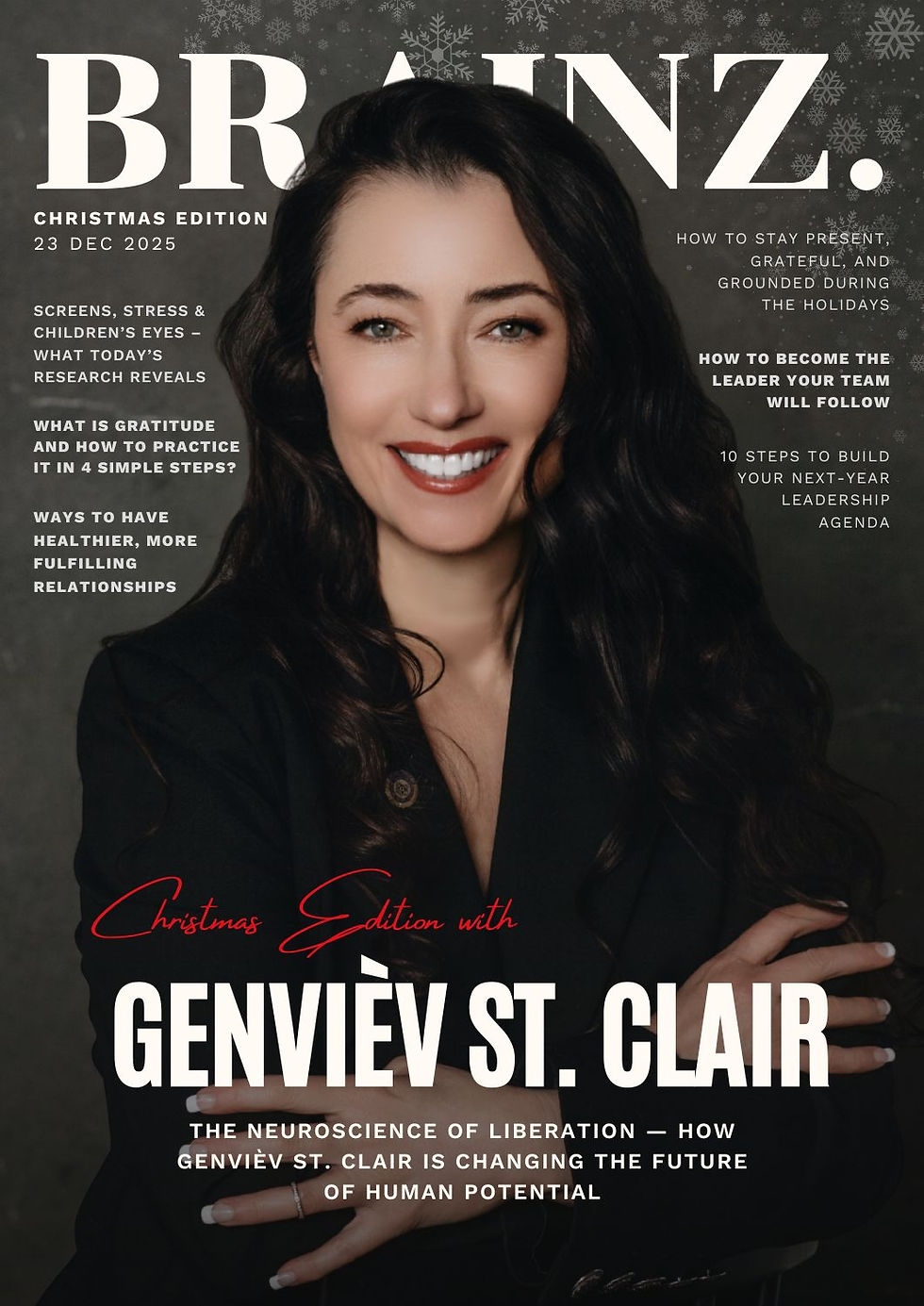The Myth of the Master Plan and Why Strategy Shouldn’t Be Set in Stone
- Brainz Magazine

- Aug 8
- 4 min read
Sarah is one of two managing partners at Vane Percy & Roberts with 25 years of experience in global strategy and communications. Known for her clear thinking, sharp wit, and approachable style, she blends expertise in media, public affairs, and strategy to deliver smart, effective solutions that make a real difference.

We love the idea of a perfect plan: The clarity. The certainty. The clean, linear logic of it. Strategy decks with bold arrows and tight timelines. Executive summaries that sound like everything is under control. There’s something deeply reassuring about it all, especially in sectors like healthcare, public affairs, or philanthropy, where the stakes are high and the environments are complex. But here’s the thing I’ve learned after more than 25 years in global communications and strategy: real impact rarely follows the master plan.

We confuse planning with control.
Strategy is essential. But when we treat it like a fixed blueprint rather than a living, breathing process, we limit what’s possible. We become rigid when we need to stay responsive. We cling to the map even when the terrain has clearly changed.
Because most of the time, the terrain does change. Fast.
New information emerges. Stakeholders shift. Timelines stretch. Unexpected resistance appears. And when that happens, the strategy that once felt so polished starts to feel irrelevant, or worse, obstructive.
Strategy is direction, not destination.
One of the biggest misconceptions I see, especially at the leadership level, is the idea that once you’ve nailed the strategy, the hard thinking is over, that it’s now about execution, discipline, and delivery.
But real strategy isn’t static. It’s iterative. It asks you to listen, to notice patterns, to respond to reality, not just assumptions. It requires you to stay close to the work, to the data, and to the humans affected by your decisions.
It’s not about having every step mapped. It’s about knowing where you’re heading and having the judgment to course-correct without spinning.
You don’t need a perfect plan – You need a resilient one
Throughout my career, I’ve learned this: flexibility is not a weakness. It’s a strength. And often, it’s what separates strategy that lives from strategy that dies on a slide deck.
Resilient strategy builds in space to adapt. It leaves room for challenge. It doesn’t confuse decisiveness with rigidity.
Because if your strategy only works when everything goes to plan, it’s not a strategy. It’s a wish.
Strategic clarity vs. strategic certainty
There’s a subtle but powerful difference between clarity and certainty. Clarity says, "This is where we’re heading, and here’s why it matters." Certainty says, "This is exactly how we’ll get there."
Clarity creates confidence. Certainty can create complacency.
Your people don’t need you to have every answer in advance. They need to know that you’re paying attention, that you’re open to insight, and that you’re leading with intention, not ego.
And that if the path changes, the purpose won’t.
So, how do you build a strategy that flexes without falling apart?
It starts with a mindset. Here are a few principles I’ve found useful:
Hold the vision tightly, and the plan lightly. Stay grounded in purpose, but be willing to pivot on the how.
Build feedback into the system. Don’t wait for a quarterly review to realize something isn’t landing. Create space for live learning.
Plan for forks in the road. Ask not just, "What’s our plan?" but, "What will we do if this fails? Or lands too soon? Or faces pushback?"
Test assumptions early. Strategy is a hypothesis. The earlier you stress-test it, the faster you can refine.
Communicate as you go. Your team can’t adapt with you if you’re not narrating the shifts.
Let go of the fantasy of the flawless strategy
There’s no glory in pretending to have it all figured out. The strongest leaders I know are not the ones who rigidly stay the course but the ones who are brave enough to change tack, clearly and deliberately, when it counts.
They don’t equate revision with failure. They equate it with leadership.
Because in today’s world, fast-moving, high-pressure, deeply interconnected, the master plan will almost always be wrong. The question is whether you’ll see that in time and respond well enough to make it work anyway.
That’s not a weak strategy. That’s real strategy.
Follow me on LinkedIn for more info!
Read more from Sarah Roberts
Sarah Roberts, Global Strategy and Communications Leader
Sarah is one of two managing partners at Vane Percy & Roberts, with 25+ years in global comms, strategy, public affairs, and stakeholder relations. Known for her clear thinking, sharp wit, and approachable style, she delivers tailored solutions that drive impactful change. Her mission: to lead with authenticity, foster collaboration, and ensure every team member feels heard and valued. Recognised for her bold, inventive approach, Sarah is a gifted networker and convenor of creative talent, always ready to make strategic choices that drive success.










.jpg)